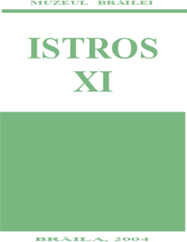Ceramica otomană descoperită la Brăila (II )
Ottoman ceramic found in Brăila (II)
Author(s): Niculina DinuSubject(s): History
Published by: EDITURA ISTROS A MUZEULUI BRĂILEI „CAROL I”
Summary/Abstract: In the middle of the 16th century, the Ottomans controlled Danube between Belgrade and Chilia, and Brăila was the last along Danube to enter the Ottoman administrative system, around 1538-1540. The occupation of Brăila meant the Turks were in control of the transit trade on the Braşov route (European and Oriental goods), as well as that Ottoman merchants invaded the markets. The city had Ottoman administration and army. There might have been a mosque from the beginning, based on the Muslims’ rights as conquerors. The Ottoman subjects that settled in Brăila brought the Oriental culture with them. Even if there are few visible traces today, archaeological research has revealed bits of the city’s life, namely Oriental ceramics. The taste for Oriental art did not come in Romania with the conquests of the 16th century but developed due to the commercial exchanges. In Brăila, the Oriental ceramics appeared prior to the 16th century, while the oldest dates back to the 15th century. The ceramic fragments discovered show that both porcelain and semi-faience were sought after. Their dating, based on the décor and color, shows an evolution for almost 300 years, from the 16th to the 18th century, as well as the existence of several workshops that made them: Kutahya, Iznik, Golden Horn, Damascus. "1. BRĂILA CENTRU COMERCIAL LA DUNĂREA DE JOS ÎN TIMPUL STĂPÂNIRII OTOMANE Din a doua jumătate a secolului al XVI-lea asupra Ţărilor Române s-a instaurat suzeranitatea otomană. Aceasta a fost pregătită şi menţinută printr-o serie de cuceriri teritoriale în cadrul expansiunii otomane. Dunărea a reprezentat pentru Imperiul Otoman o importantă arteră comercială şi militară: făcea legătura între Peninsula Balcanică şi Europa Centrală - de aici pe alte drumuri spre apusul şi nordul Europei - aceste drumuri ce legau Balcanii de nordul şi vestul european - reprezentau tot atâtea debuşee comerciale, cu mari venituri pentru Imperiu. Până în secolul al XVI-lea au fost ocupate Turnu şi Giurgiu pentru crearea unor"[...]
Journal: ISTROS
- Issue Year: 11/2004
- Issue No: 1
- Page Range: 191-217
- Page Count: 27
- Language: Romanian
- Content File-PDF

